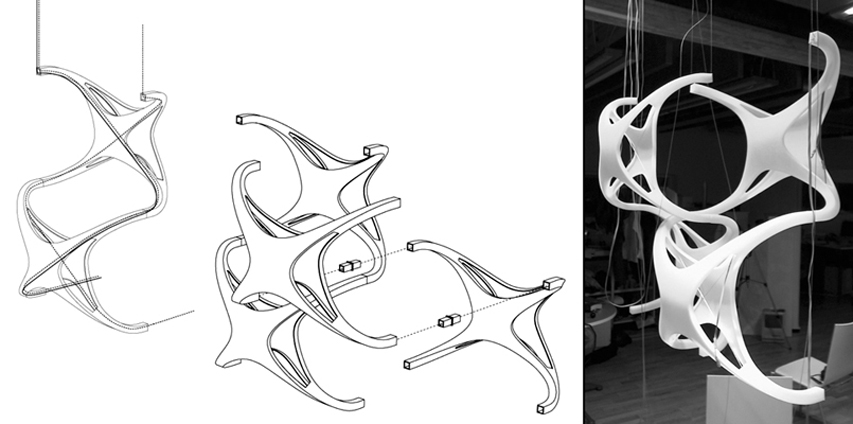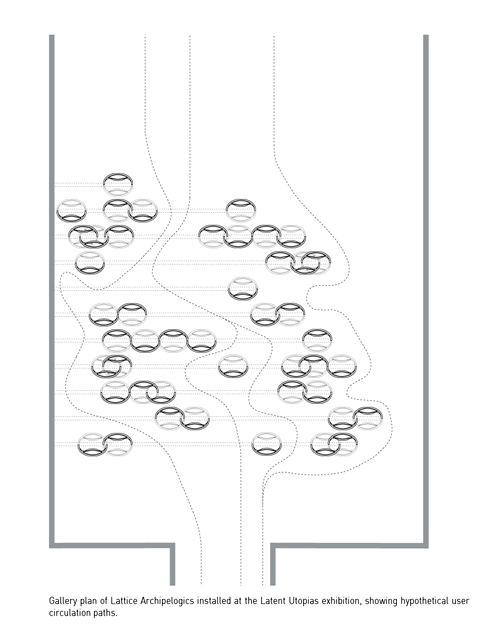Lattice Archipelogics
Exhibition Design 2002
servo in collaboration with Smart Studio/Interactive Institute
Lattice Archipelogics is an interior scale installation designed for the exhibition Latent Utopias. This full scale prototype integrates remote sensing technology, modular cells, materiality and light, exploring the resonance between formal systems and their distributional and indexical capacities. The activity of gallery users as they move through the installation environment is registered and computationally transmitted to a system of relays connected to lighting elements. This real-time interaction effects both material and organizational phenomena, reconfiguring light density and altering characteristics of visual porosity. This technique enables the occupants to influence and mutate the space in real-time, thereby continuously updating and transforming the installation.
The physical architecture of Lattice Archipelogics, its hardware, is a thick atmosphere of vacuum-cast polyurethane cells. Taking its cues from the processes that form archipelagos in the natural world, the design re-thinks them through synthetic and industrial procedures. The manufacturing of the each cell was developed through a series of solid stereolithographic prints and negative silicon molds produced directly from computer models. In assembly and structure, the cells interlock forming a counterbalanced lattice network that is vertically staggered in space. On a smaller scale, the interior of each cell distributes the infrastructure for the entire installation, organizing it into helical circulation patterns. The virtual architecture of Lattice Archipelogics, its software, is an algorithmically driven program designed in collaboration with the Interactive Institute/Smart Studio in Stockholm. The informational structure of the script integrates sensor inputs and outputs into the materiality of the physical cells. Motion sensors react to the circulation of people in the installation. That information is processed by software designed to translate the patterns of movement by organizing them into cellular particles that distribute in variable, algorithmically-driven assemblies. These assemblies of information in turn trigger the LED lighting array. The algorithm for the software was written such that it re-samples stored movement patterns even when the installation is left vacant or unoccupied, perpetuating spatial transformations.
Exhibition Design – servo >> Design Partners - David Erdman, Marcelyn Gow, Ulrika Karlsson, Chris Perry >> Design Team - Daniel Norell, Clare Olsen, Jonas Runberger >> Responsive System Design - Smart Studio/Interactive Institute - Tobi Schneidler, Fredrik Petersson, Olof Bendt, Magnus Jonsson, Pablo Miranda >> Fabrication Consultants – CARAN >> With Generous Support From -Zaha Hadid and Patrik Schumacher (Steirischer Herbst), CARAN, IASPIS (International Artists’ Studio Program in Sweden), KTH Royal Institute of Technology, SSARK medialab, White arkitekter >> Permanent collection: SFMoMA, San Francisco
















